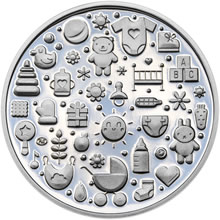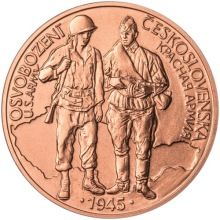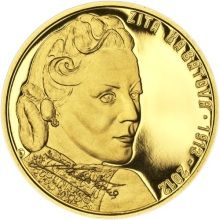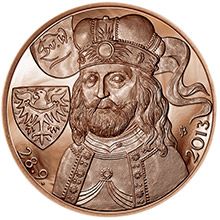Organization of monetary relations
HISTORY OF CZECHOSLOVAK CURRENCY.
The primary task after the end of the war was to restore a dilapidated economy and eliminate chaotic money circulation. On April 4, 1945, at Košice, at a joint meeting of the London exile government of President Edvard Beneš and the Moscow exile leadership of the Communist Party of Czechoslovakia, led by Klement Gottwald, a new government was formed and its program, the so-called Košice government program, was adopted. It contained initial ideas about the new organization of the state. It was a compromise between the demands and ideas of different political forces. It meant a shift to a centrally controlled economy. The first task was to liquidate the post-war monetary chaos and lay the foundations for a new monetary policy.
- A ban on the circulation of German marks in the territory of the former Protectorate of Bohemia and Moravia was announced
- The validity of protectorate currencies was extended to the entire territory of the Czech lands, including the former so-called Sudetenland borderland
- The validity of the koruna vouchers from 1944, which were issued during the liberation of Czechoslovakia, was extended to the entire territory of the republic
- A ban on the circulation of Hungarian pengös has been announced
- The validity of Slovak currency was extended to the whole territory of Slovakia
- Some currency from the time of the First Republic has been renewed.
After these adjustments, the exchange rate between the Czech and Slovak koruna was set at 1: 1. The partial measures culminated in the reintroduction of the single Czechoslovak currency - the Czechoslovak koruna (CZK) - on 1 November 1945 on the basis of a decree of the President of the Republic of 19 October 1945. In December 1945, the Provisional National Assembly approved the accession of Czechoslovakia to the International Monetary Fund (IMF) and the World Bank.
- A ban on the circulation of German marks in the territory of the former Protectorate of Bohemia and Moravia was announced
- The validity of protectorate currencies was extended to the entire territory of the Czech lands, including the former so-called Sudetenland borderland
- The validity of the koruna vouchers from 1944, which were issued during the liberation of Czechoslovakia, was extended to the entire territory of the republic
- A ban on the circulation of Hungarian pengös has been announced
- The validity of Slovak currency was extended to the whole territory of Slovakia
- Some currency from the time of the First Republic has been renewed.
After these adjustments, the exchange rate between the Czech and Slovak koruna was set at 1: 1. The partial measures culminated in the reintroduction of the single Czechoslovak currency - the Czechoslovak koruna (CZK) - on 1 November 1945 on the basis of a decree of the President of the Republic of 19 October 1945. In December 1945, the Provisional National Assembly approved the accession of Czechoslovakia to the International Monetary Fund (IMF) and the World Bank.
CONTENT
- Origin of the Czechoslovak currency.
- Monetary stabilization.
- Establishment of the central bank.
- National Bank of Czechoslovakia.
- Gold reserve.
- Economic boom.
- Depression.
- The main activities of banks.
- Development of the national economy.
- Art designs.
- Czech banking system.
- The disintegration of Czechoslovakia.
- German occupation of the Czech lands.
- Currency damage caused by the occupation.
- Preparation of post-war monetary policy.
- Inflation and monetary chaos.
- Organization of monetary relations.
- Socialization of finance.
- February 1948 and central management.
- Directive management of monetary relations.
- Monetary reform of 1953.
- Central plan.
- Isolation.
- Reform efforts.
- "Standardization".
- Economic problems.
- Economic transformation.
- Changes in monetary policy management.
- Development of the koruna exchange rate.
- Development of the banking system.
- Development in 1990-1992.
- Division of the Czechoslovak Socialist Republic.
- Origin of the Czech koruna.
- Monetary policy management.
- International cooperation.
- Monetary stabilization.
- Establishment of the central bank.
- National Bank of Czechoslovakia.
- Gold reserve.
- Economic boom.
- Depression.
- The main activities of banks.
- Development of the national economy.
- Art designs.
- Czech banking system.
- The disintegration of Czechoslovakia.
- German occupation of the Czech lands.
- Currency damage caused by the occupation.
- Preparation of post-war monetary policy.
- Inflation and monetary chaos.
- Organization of monetary relations.
- Socialization of finance.
- February 1948 and central management.
- Directive management of monetary relations.
- Monetary reform of 1953.
- Central plan.
- Isolation.
- Reform efforts.
- "Standardization".
- Economic problems.
- Economic transformation.
- Changes in monetary policy management.
- Development of the koruna exchange rate.
- Development of the banking system.
- Development in 1990-1992.
- Division of the Czechoslovak Socialist Republic.
- Origin of the Czech koruna.
- Monetary policy management.
- International cooperation.
JÁ  ZLATÉ MEDAILE.CZ
ZLATÉ MEDAILE.CZ



